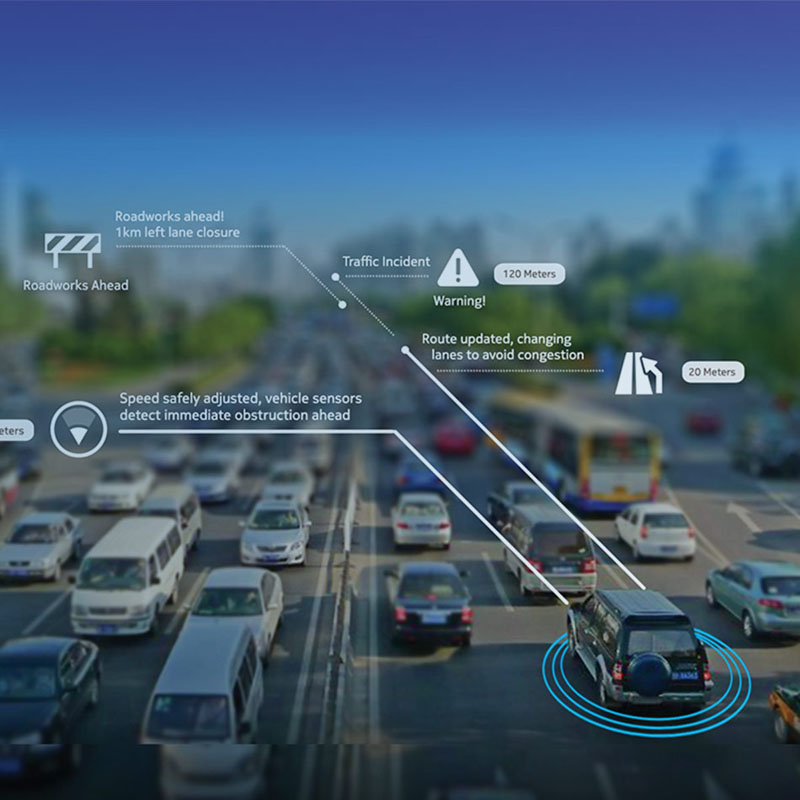Deliver custom solutions in half the time


Challenge
HERE was spearheading the development of navigation systems for self-driving and connected cars, which required detailed maps with real-time connected services. However, the data that powered this system was stuck in silos and not standardized, which complicated matters.
Solution
By using Kendo UI, HERE was able to rapidly build a scalable, real-time app that helped the mapmaker wrangle all the data into one enterprise application. Kendo UI data management widgets enabled HERE to expedite the development process.
Result
After re-architecting the custom enterprise application with Kendo UI, HERE has been able to deliver custom solutions in half the time.
Full Story
Challenge
When you flip on the navigation system in your car, chances are the map was created by HERE, a Nokia company. Known as NAVTEQ prior to its acquisition by Nokia in 2008, four out of five automobile navigation systems across North America and Europe are powered by HERE maps. Today, HERE is spearheading the next generation of maps, designed to accommodate self-driving and connected cars. These 3D “reality maps” require a level of detail unprecedented in the industry.
“ADAS (Advanced Driver Assistance Systems) and outright autonomous navigation require detailed maps with real-time connected services,” explained John Henkel, software engineer for HERE’s Enterprise Application Group. As HERE rolls out these exciting map products, Henkel further explained, “It is critical that HERE’s product managers have a forecasting tool that enables them to see our product roadmap, estimate when new features and coverage levels will be in place and ultimately determine what was accomplished against established targets.”
A team of product managers spread across the globe is responsible for forecasting product metrics in their regions. They rely on a custom built enterprise application known across the company as Mosaic. However, prior to Mosaic, data was in silos, not standardized and product managers struggled with time consuming manual data entry.
They needed to confront the tremendous task of establishing standards to track, plan and measure performance and results for HERE’s product road map with product managers around the globe, each with unique requirements. They needed to bring everything together in one enterprise application.
Solution
HERE selected Kendo UI® by Progress, which offered the ideal solution to rapidly build a scalable, real-time app that exceeded end-user expectations. Henkel credits powerful Kendo UI data management widgets like Grid and PivotGrid with speeding development and providing product managers with new capabilities that save them time and reduce errors.
“When you look at the initial build out, it’s not just going through the Telerik Grid controls where you manage data points, but it's Mosaic’s customized widgets that do so much for you,” Henkel said. “For instance, instead of managing individual data points, a wizard using the Telerik Window, Slider and List controls automates this -- so for the end user there are a lot of features that expedite what was done before and that saves time and reduces errors.”
Mosaic also uses the Telerik Kendo UI Map control, which in turn calls Microsoft’s Bing map services. “Bing services are built on HERE’s platform, so it’s terrific to use Telerik map controls with our own map,” said Henkel.
Result
“Using Telerik Kendo UI within our data warehouse group made it possible to deliver a custom built solution in half the time to our global community of end users,” Henkel said.
Since re-architecting Mosaic with Telerik Kendo UI framework, product managers now have:
- A real-time tool to estimate features and coverage levels
- A tool to track targets and results using automated processes
- A system to track commitments to customers
“Mosaic is now an application that allows our product managers to effectively and efficiently capture planned and actual metrics about our product roadmap -- we are able to measure how that’s driving our product roadmap,” Henkel said. “For our customers that information is critical. They build on top of our platform; when customers announce a new technology, they need to know it can be supported with what we forecast. Mosaic’s reporting now accomplishes this.”
Henkel also credits much of the success of Mosaic to Telerik customer support.
“With Telerik we receive next morning support,” he said. “We’ll put a ticket in today central standard time (US) and we’ll have a response by the morning. If you have a problem and let them know, they will help you out. That commitment to support is what you need to succeed and probably one of the biggest selling points for us.”
As with any enterprise application, adoption and usage of the solution tell the story best.
”The biggest indicator of success is just how widely Mosaic is used across the enterprise today,” Henkel concluded.